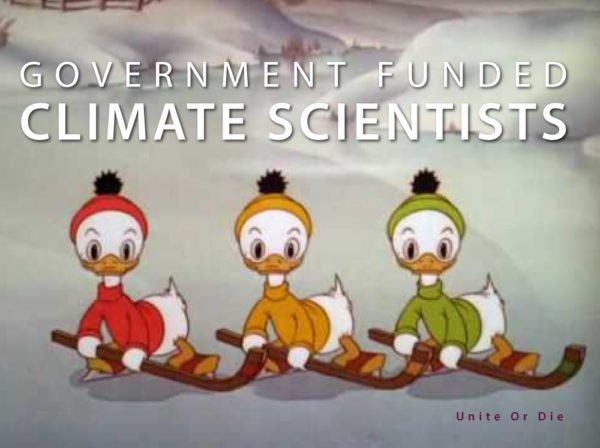Breaking Hockey Sticks: Antarctic Ice Core Edition | Watts Up With That?
Ancient air bubbles trapped in ice enable us to step back in time and see what Earth’s atmosphere, and climate, were like in the distant past. They tell us that levels of carbon dioxide (CO2) in the atmosphere are higher than they have been at any time in the past 400,000 years. During ice ages, CO2 levels were around 200 parts per million (ppm), and during the warmer interglacial periods, they hovered around 280 ppm (see fluctuations in the graph). In 2013, CO2 levels surpassed 400 ppm for the first time in recorded history. This recent relentless rise in CO2 shows a remarkably constant relationship with fossil-fuel burning, and can be well accounted for based on the simple premise that about 60 percent of fossil-fuel emissions stay in the air.Today, we stand on the threshold of a new geologic era, which some term the “Anthropocene”, one where the climate is very different to the one our ancestors knew.
[…Blah, blah, blah…]
NASA
We’ve all heard variations of this meme… ad nauseum… They tell us that levels of carbon dioxide (CO2) in the atmosphere are higher than they have been at any time in the past400,000800,0002.5 million20 million years.This claim is generally based on the fact that Antarctic ice cores don’t indicate interglacial CO2 levels above 280-300 ppm at any point in the past 800,000 years or so. While this is true, does it actually inform us that atmospheric CO2 levels could not have been well over 300 ppm during pre-industrial times?
WAIS Divide and the Effects of Resolution on Amplitude
West Antarctic Ice Sheet Divide Ice Core
On December 1, 2011, the West Antarctic Ice Sheet (WAIS) Divide ice core project, funded by the National Science Foundation, reached its final depth of 3405 meters (11,171 feet; over 2 miles), recovering the longest U.S. ice core to date from the polar regions. The 12.2-centimeter (4.8-inch) diameter cylinders of ice that make up the ice core contain uniquely detailed information on past environmental conditions during the last 68,000 years, such as the atmospheric concentration of greenhouse gases, surface air temperature, wind patterns, the extent of sea ice around Antarctica, and the average temperature of the ocean. Successfully retrieving the ice core is the culmination of an eight-year project to obtain a paleoclimate record from one of the remotest parts of the Antarctic continent.[…]
In the WAIS Divide ice core, each of the past 30,000 years of snowfall can be identified in individual layers of ice, with lower temporal resolution records extending to 68,000 years before present. By allowing an examination of past climate at an annual resolution, the ice core record is helping scientists understand why climate can change abruptly and how climate may unfold in the coming century.
Other ice-coring projects have produced cores of lower temporal resolution, showing that the current level of atmospheric greenhouse gases, which is due to the burning of fossil fuels, is the highest in at least 800,000 years. The ice from the WAIS Divide ice core that is between 30,000 and 68,000 years old — while not containing records with annual resolution — contains a higher time resolution record than previous projects.
[…]
WAIS Divide
This comment caught my attention:Other ice-coring projects have produced cores of lower temporal resolution, showing that the current level of atmospheric greenhouse gases, which is due to the burning of fossil fuels, is the highest in at least 800,000 years.
This raises the question: Are the ice cores “of lower temporal resolution” capable of resolving century-scale shifts in atmospheric CO2? If not, then the conclusion “that the current level of atmospheric greenhouse gases, which is due to the burning of fossil fuels, is the highest in at least 800,000 years” is not supported.
The ice cores cannot resolve CO2 shifts that occur over periods of time shorter than twice the bubble enclosure period.
According to Neftel et al. (1988), CO2 fluctuation with a duration of less than twice the bubble enclosure time (equivalent to approximately 134 calendar yr in the case of Byrd ice and up to 550 calendar yr in Dome Concordia) cannot be detected in the ice or reconstructed by deconvolution.McElwain et al., 2001
Here is a schematic diagram of bubble trapping process for the DE08 ice core:Read More: wattsupwiththat.com/2017/03/28/breaking-hockey-sticks-antarctic-ice-core-edition/

You've been UpVoted via the UpVote Experiment 002 Bot. Depending on my VP & the price of STEEM you should get a $.01-$.03 for your trouble.
Read more about this experiment here.
Thank You - @blueorgy
Excellent write!